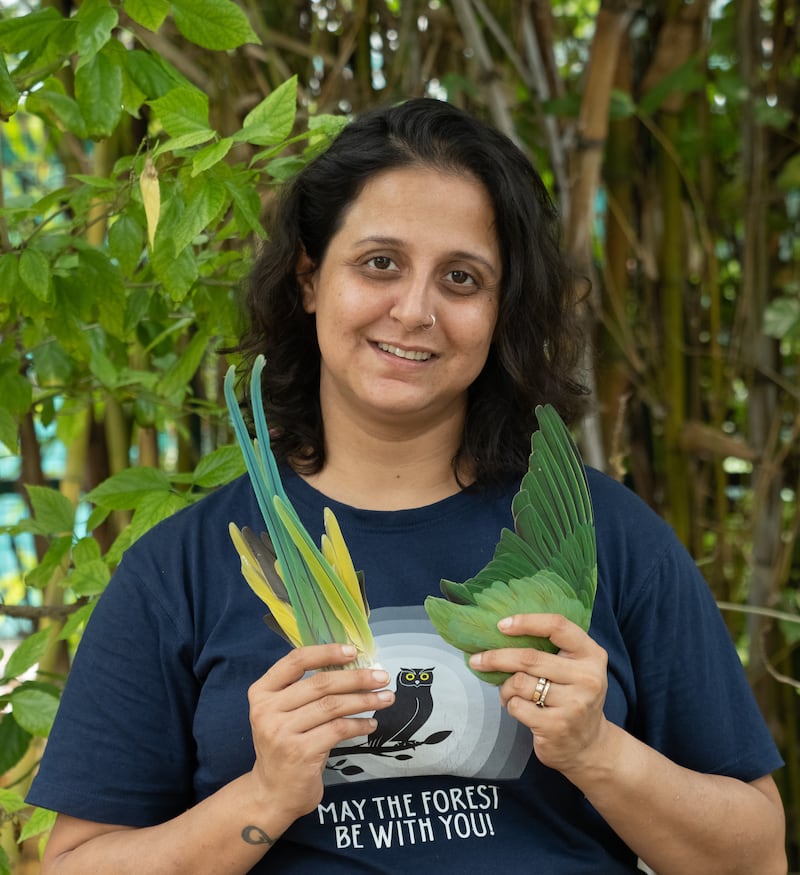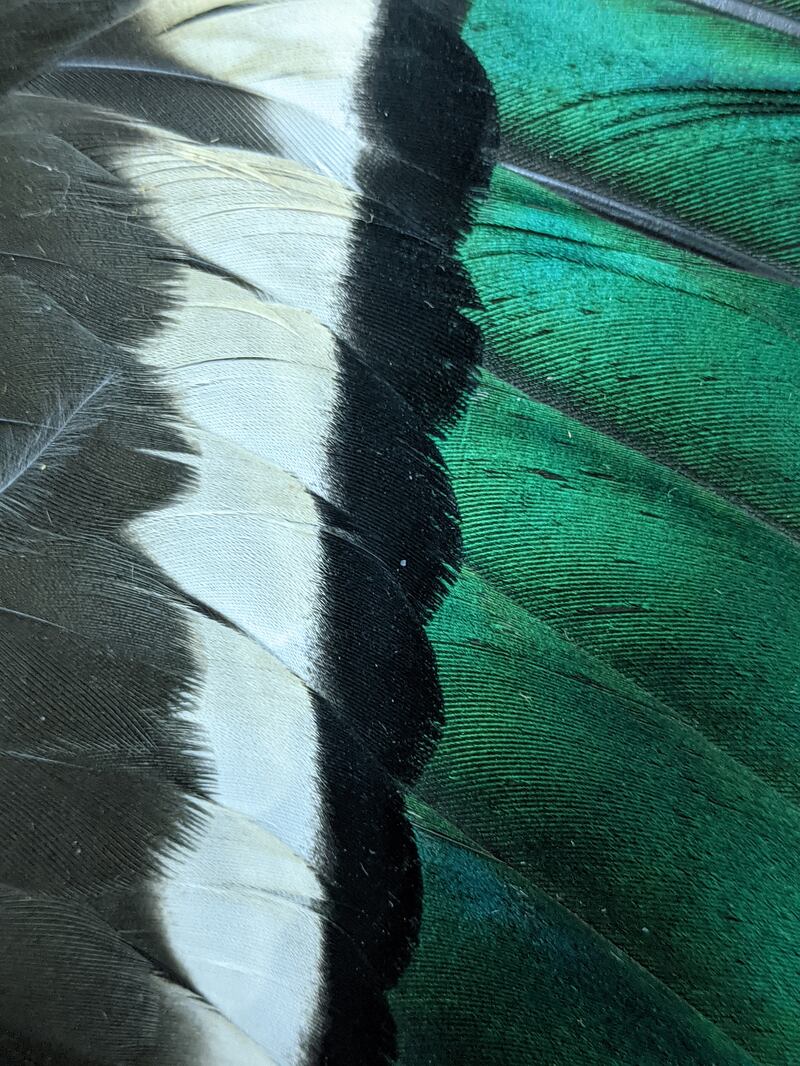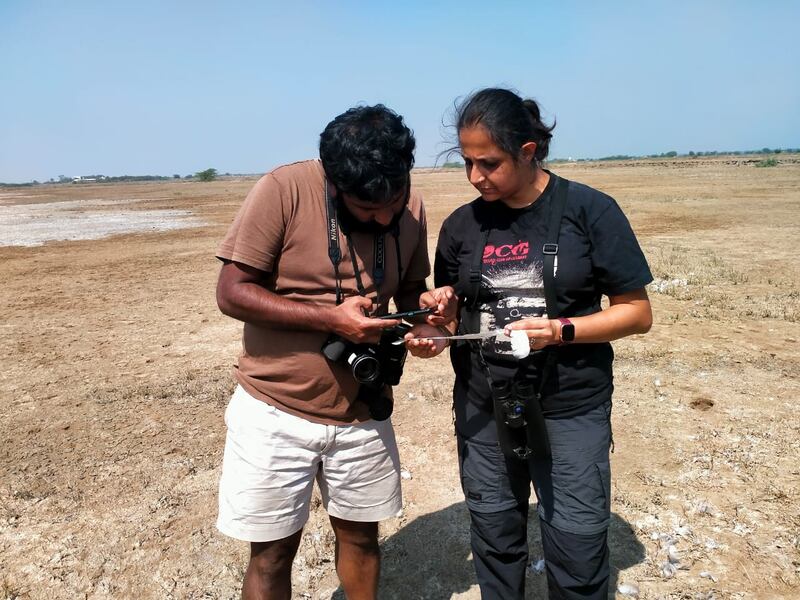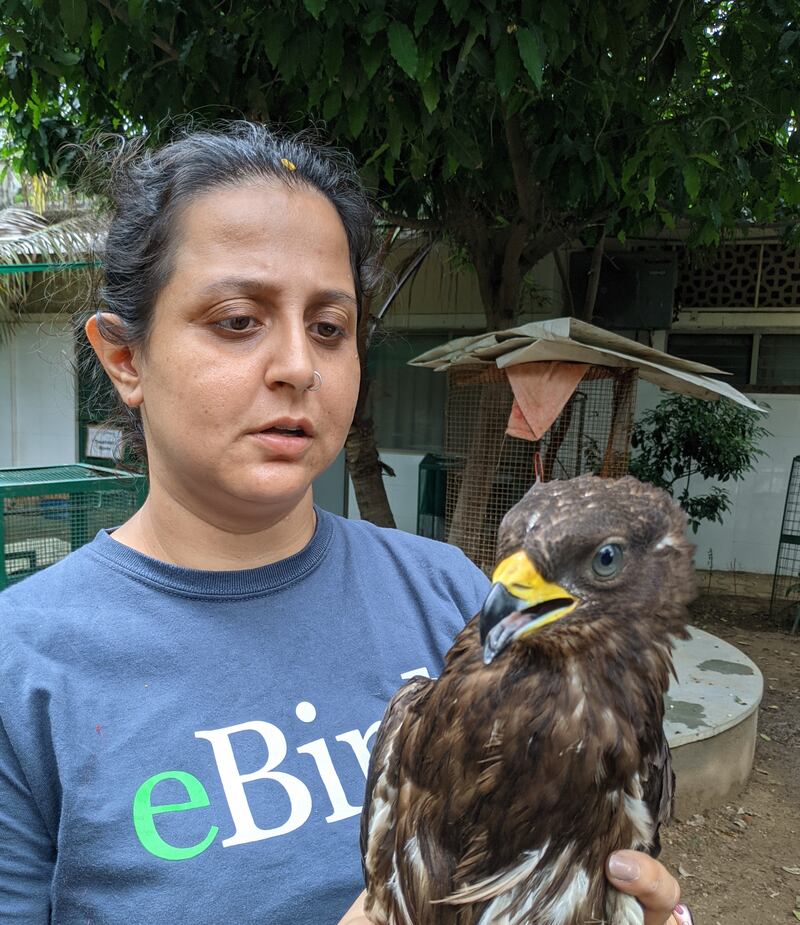Esha Munshi remembers the time she fell passionately in love with bird feathers. It was in 2020, at the height of the pandemic. While lounging around in her flat in Ahmedabad, a city in the western Indian state of Gujarat, she saw her pet cat attack a beautiful bird that had flown into her balcony. Though the creature managed to escape the feline assault, her perfect plumage was extensively damaged.
“I picked up the bird’s feathers scattered on the floor one by one, each no bigger than my little finger, and was awed by how gorgeous the colours, the pattern and its markings were,” recalls the architect.
Curious, Munshi tried looking up information on the bird species online, but nothing was available. With some difficulty, she finally established contact with an ornithologist in another city who informed her that the feathers belonged to the Indian silverbill, or the white-throated munia, a passerine bird found in the subcontinent.
“Though India has a staggering avian biodiversity, there’s hardly any data available on bird species and their plumage," says Munshi, 35. "I’ve been an avid birder since childhood, and have done numerous bird trails across the country, but this deficiency has always bugged me."
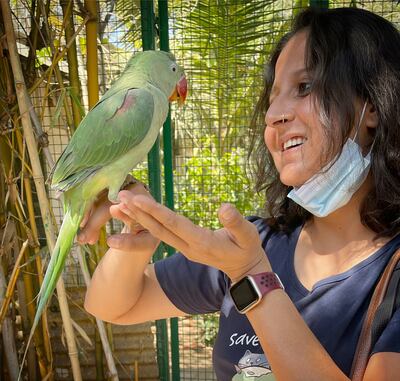
Rather than continue to remain frustrated, this time Munshi decided to do something about it. She mulled over the prospect of launching a digital feather library with the help of her friend Sherwin Everett, 30, who is a wildlife rehabilitator and hospital curator with the Jivdaya Charitable Trust in Ahmedabad. The hospital receives about 1,500 to 2,000 birds per month for treatment. A number of the birds succumb to their injuries and stress or died as roadkill, after which their bodies are passed on to the local corporation for disposal.
“No written record is maintained by the hospital for the dead birds," Munshi explains. "So we decided to request the administration to hand over their plumage to us so we could record and document such details about as many species as we could."
Once they had enough information, the duo launched the digital feather library, in November, India’s first and the only one of its kind in the world. “Our repository contains detailed information about native bird species including their weight, body length, beak width, wingspan, number of feathers, various other measurements, as well as the bird’s geographical location."
The idea, Munshi says, is that if a birder stumbles upon a feather, they should be able to compare it to an existing archive and learn more about the species. “India currently has about 1,300 types of birds of which I’ve seen about 1,060,” she says. “There are many people out there like me who’re curious about our feathered friends, so our library will help satiate their curiosity.”
The website provides easy access to feather plates, as well as all data regarding bird species under one roof. “Featherlibrary.com will also act as a reference point for feather transplants. Based on availability, actual feathers can also be drawn from the library." Researchers, ornithologists and forest department staff can also access critical bird-related data for their work.
“The interest in the library is also helping create a community of birders while sensitising people about India’s rich biodiversity and avifauna heritage."
Munshi has now put her architecture career on hold to devote all her time to set up bird museums and more libraries across India.
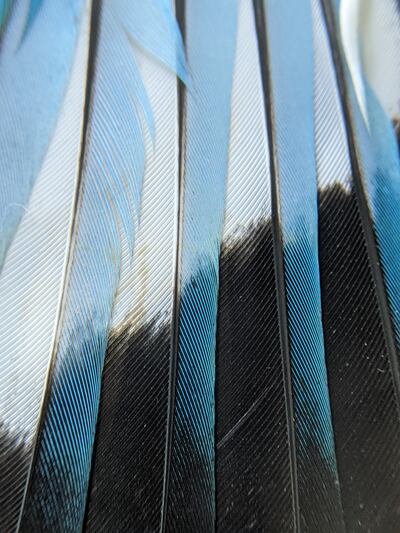
Over the nine months that the library has been in existence, it has been able to garner 188 bird specimens. These include rare varieties including the Indian skimmer, Sooty tern and the Yellow-legged buttonquail, among others. Within 24 hours of the bird’s death, it is put in the freezer to prevent the decomposition of its body and kill all pathogens while whittling down the body’s chances to infect humans with viruses. The feather samples are sanitised, collected and photographed. Each piece is counted, measured and species details and location noted.
With the success of her first venture, Munshi is now expanding her operations, roping in other bird lovers all over India. “We’re in talks with some other cities also to establish more feather libraries. We’ve just signed an MOU with the National Centre for Biological Sciences in Bengaluru to establish a feather museum at their facility."
Such is Munshi’s passion for her job that she has also just finished a two-year online course in Bird Biology from Cornell University, US. “I’m now a certified ornithologist and can create round skin specimens which involves stuffing the birds to preserve them pretty much like animal trophies. This skill will also help me in showcasing and displaying birds in the museums that we set up."
The library’s team has expanded from its original two founding members to 14. There’s also a full-time professional photographer who visually documents the bird species. Munshi and Everett are busy adding new features, including X-rays (for skeletal structure) and CT scans (for muscular and organ data) of the entire specimen before it is dissected to gather information on the birds’ habits as well gender.
The Feather Library Charitable Trust has also been launched and the two founders are applying for funding to set up a lab. Their project is currently funded by their own savings, as well as some overseas birding organisations.
“People are very interested in our work and are coming forward to us to ask if they can help in any way. We’re also hiring more people as our operations expand pan India and hopefully overseas also one day."
